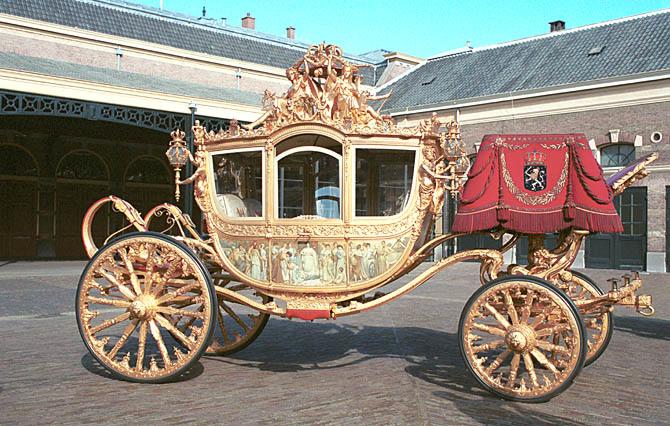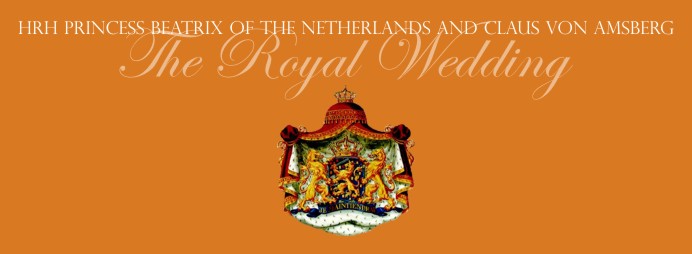

The task for the designers and builders was difficult. The requirements included that the Queen should be visible from every angle and, likewise, that the Queen would be able to see her people from every angle. She should be able to stand upright in the coach, which should be fit to be drawn by eight horses and able to make easy turns in narrow streets. And yet it should be very solid, stable and comfortable.
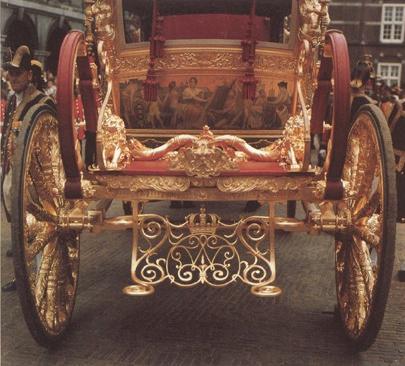
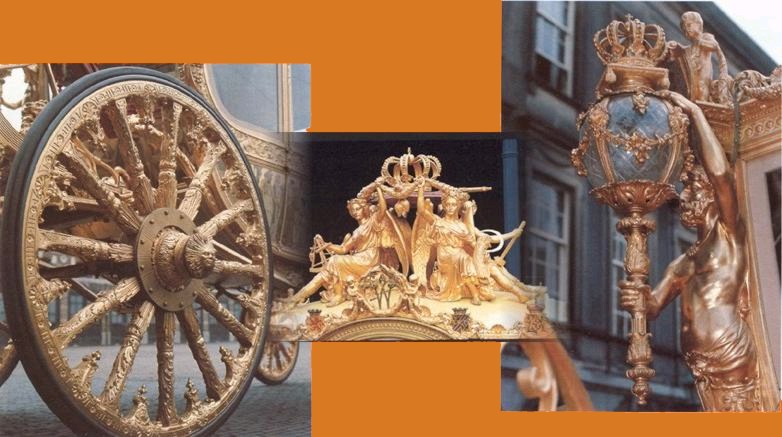
The paintings on the panels signify: Tribute by the Netherlands (right), Tribute by the colonies (left), History (rear; this includes pictures of the Royal Palace and the Nieuwe Kerk), and Future (front). The allegorical figures on top of the coach represent the four activities that are vital for prosperity: Trade, Labour, Agriculture, and Shipping. Together they carry the crown, sceptre, and sword.
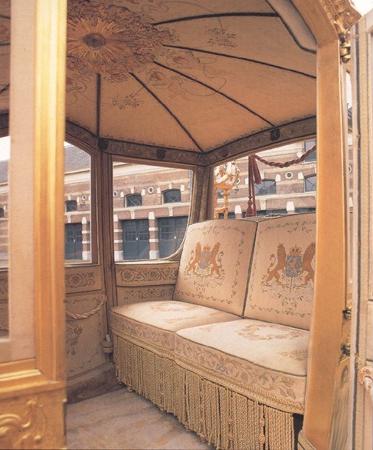
It took two years to build the Golden Coach. Some panic was caused by Queen Wilhelmina's decision not to accept any presents at the occasion of her inauguration. Eventually she made an exception for the Golden Coach, and accepted it on 7 September 1898. It was first used in Amsterdam shortly after the Queen's marriage to Prince Hendrik of Mecklenburg-Schwerin in 1901. It has been used for the opening of Parliament as from 1903.
